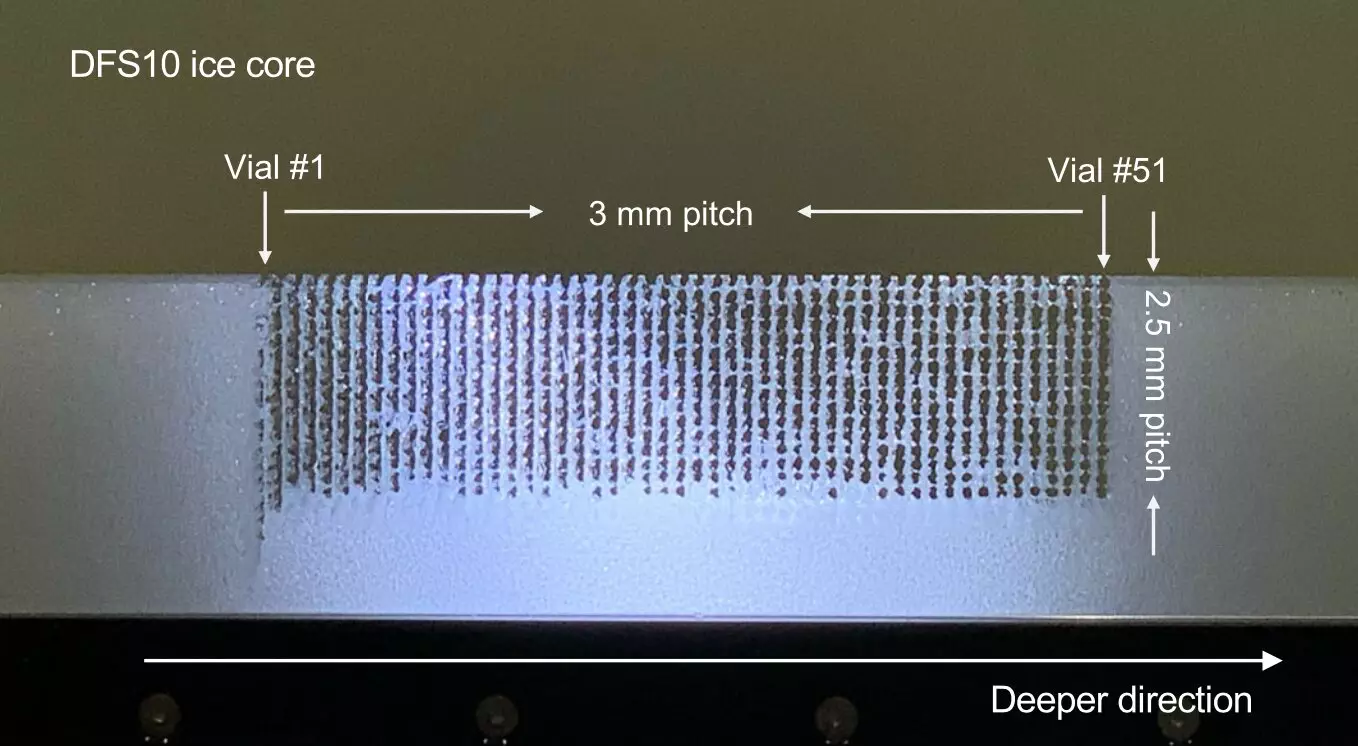Scientists have long relied on ice cores to study past changes in climate. However, the traditional methods of sampling ice cores have limitations that prevent a deeper understanding of temperature variations over time. In a groundbreaking study led by researchers from the Astro-Glaciology Laboratory at the RIKEN Nishina Center in Japan, a new laser-based sampling system has been developed. This system, known as the laser melting sampler (LMS), offers a 3-mm depth-resolution, which is three times smaller than the current available methods. With its ability to detect temperature variations over smaller periods of time, the LMS is expected to revolutionize the study of climate change.
The Significance of Ice Cores
Tree rings can provide some insights into past climate conditions, but glaciers offer a much longer perspective on environmental changes. By analyzing ice cores, researchers can reconstruct continuous temperature profiles and gain a deeper understanding of climate change throughout history. However, one major challenge has been sampling ice cores from deep locations, where annual accumulation has often been compressed to sub-centimeters. The current methods for sampling ice cores have limitations that prevent accurate temperature reconstructions, but the new laser melting sampler overcomes these challenges.
The laser melting sampler offers several significant advantages over current sampling methods. Firstly, it provides a depth-resolution of 3 mm, allowing for the detection of temperature variations that occurred over much smaller time periods in the past. This breakthrough will enable scientists to reconstruct continuous annual temperature changes from thousands to hundreds of thousands of years ago. Secondly, the LMS does not destroy the critical oxygen and hydrogen isotopes found in water, which are crucial for inferring past temperatures. This is a major improvement compared to existing methods that often destroy the necessary sample components for temperature analysis.
The Functionality of LMS
The LMS system uses a laser beam delivered through an optical fiber with a special silver nozzle. The laser melts the ice core, and the liquid sample is quickly pumped out and deposited into stainless steel vials. The system went through an optimization process to ensure efficient melting, prevent overheating of the laser, and maintain the stability of the isotopes necessary for correct temperature measurements. Once the hardware and processes were refined, a proof-of-concept experiment was conducted on a 15-cm segment of a 50-cm Dome-Fuji shallow ice core taken from East Antarctica. The researchers were able to obtain 51 discrete samples at regular 3-mm intervals, matching the results from hand segmentation, which is only feasible in a controlled research setting.
The development of the LMS brings new possibilities to the field of glaciology and climate science. The improved depth-resolution allows for the detection of smaller temperature variations, providing a more detailed picture of past climate changes. This breakthrough will enable scientists to reconstruct temperature profiles with unprecedented accuracy, leading to a deeper understanding of climate patterns and mechanisms. By studying past changes in climate, researchers can gain insights into the current and future impacts of climate change.
The introduction of the laser melting sampler represents a significant advancement in ice core analysis. The higher depth-resolution of the LMS allows for the detection of temperature variations over much smaller periods of time, offering a more comprehensive understanding of past climate changes. The system’s ability to preserve critical isotopes necessary for temperature analysis ensures accurate reconstructions. The breakthrough provided by the LMS will revolutionize climate research, providing scientists with the tools to better understand and predict the impacts of climate change. Through continued advancements in ice core analysis, researchers can work towards finding sustainable solutions for mitigating climate change.



Leave a Reply